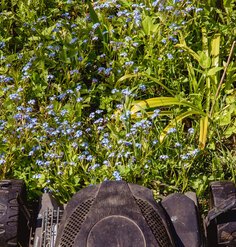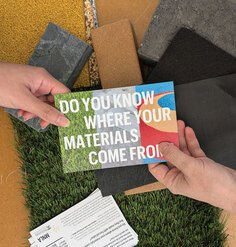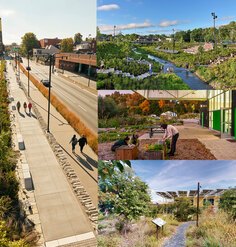From the Field: CSI Takes Its First Look at Private Single-Family Residences
By Pamela Blackmore, BLA, Christopher Binder, MLA Candidate, and Bo Yang, Ph.D., Assistant Professor, Landscape Architecture and Environmental Planning, Utah State University
Over two dozen project types are featured in the Landscape Performance Series Case Study Briefs, representing landscapes from public parks and streetscapes to plazas and even zoos. Yet, despite such a prolific range, none have documented one of the most widespread and accessible applications of sustainable design for both the general public and the professional landscape architect: the single-family home. This summer, our Case Study Investigation (CSI) research team is helping tackle this new and exciting territory by investigating three privately-owned, single-family landscapes created by the firm, Design Workshop in Aspen, Colorado.
Cascade Garden: Reinventing a Landscape with Minimal Disturbance
Can a landscape architect transform a residential lot into a completely different space without destroying existing plant material, disrupting the soil, or waiting years for new, young trees to establish? The site design for this property accomplishes exactly that by utilizing a number of simple but effective techniques that strive to create a new landscape that retains the economic, environmental, and social benefits of the landscape that had been there for years. Our investigation sought to quantify these benefits through innovative methods that include assessing the value of retained or transplanted trees, determining the advantages of siting the new home on the old home’s footprint, and understanding the habitat and water quality effects of deepening rather than expanding the pond.
Riverside Ranch: Restoring Nature and History
Restoring this brownfield site from an industrial asphalt dump to a functional wetland ecosystem was no easy task. To complete the property with a quad of historical and accurately refurbished buildings dating from the 1800s was even more challenging. While restoration was the driving principle in this design, an equally important goal was to establish trout habitat. To determine how successful the design is in creating a veritable ‘fisherman’s paradise’ we explored the streams, ponds, and riparian zones created on site, delving into questions of water quality and habitat suitability.
Capitol Valley Ranch: Creating Microclimates with Natural Energy
This high-altitude landscape was conceived of as a series of outdoor living areas that take advantage of passive solar heating and sun/shade relationships to transition seamlessly with the interior of the home, a sort of modern take on the classical indoor-outdoor relationship of the quintessential Italian villa. The primary challenge for the research team in quantifying the relative success of this design approach was measuring the various factors (temperature, wind speed, relative humidity) that contribute to human comfort levels. Our approach began with selecting 66 individual points around the property at which to measure each environmental factor, then monitoring each point three times throughout the day in order to understand which areas are most comfortable during peak use times in the morning, afternoon, and evening. After gathering the data, the team assembled the information into a GIS that plotted the relative comfort of each point on a physical map of the property, allowing for a thorough bioclimatic analysis of the landscape.
Veteran Research Fellow Bo Yang, returning Research Assistant Pamela Blackmore and newcomer graduate student Christopher Binder are participating in LAF’s 2013 Case Study Investigation (CSI) program and exploring new methods to document the performance of three private residences in Aspen, Colorado. Any opinions expressed in this article belong solely to the author. Their inclusion in this article does not reflect endorsement by LAF.











